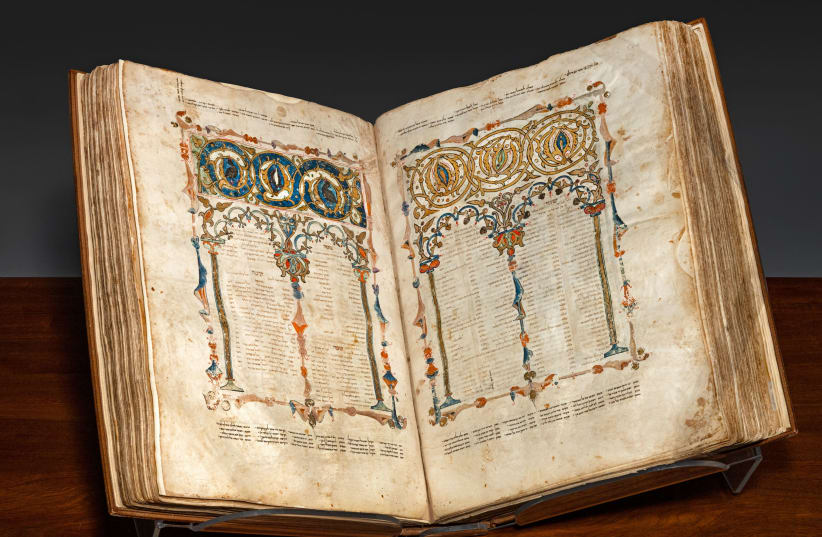The Shem Tov Bible, a sacred Jewish text dating back to 1312 and a monument in medieval Spanish tradition, is available for auction with Sotheby’s for an estimated $5 million-$7m. price tag, according to the auction house.
Touted as one of the most significant medieval Hebrew manuscripts ever written, the book is seen as an artistic masterpiece from Spain’s Golden Age. During this time, Jewish, Christian, and Islamic art influenced the region as a whole.
With its hefty price tag, the text is seen as the most valuable illuminated manuscript to date. It was written in 1312 in Soria, Castile, which is Spain’s central region today.
One of its many hallmarks is that it is one of the only ones connected to the Codex Hilleli, which was believed to have been created in the year 600. Its transmission of the text of the Hebrew Bible is believed to be the closest to the ancient text.
The text itself is believed to have strong mythical significance, as its creator, scholar Rabbi Shem Tov Ibn Goan, added a kabbalistic dimension to its Hebrew letters. The meaning of these letters in their unique forms remains a mystery.
Crowns on the lettering, or the tagei, were said to include kabbalistic secrets.
The book is one of only four known copies of the Sefer Tagei.
Who does the text belong to?
The Shem Tov Bible was believed to be accompanied by a biblical commentary, Sefer Ha-Derash, which was also lost, according to scholars Raphael Joseph of the Open University of Israel and Dov Schwartz of Bar-Ilan University. The commentary that is associated with the text was lost in bible verses, the scholars said.
The text was acquired by David Sassoon, a collector of Hebrew manuscripts worldwide, in 1909. Before then, much of the history of the text had been lost for centuries. It was unaccounted for before it was found in Tripoli in the 19th century.
The text has not been available for auction since the 1980s.
The auction house’s announcement was timed to coincide with Shavuot.

